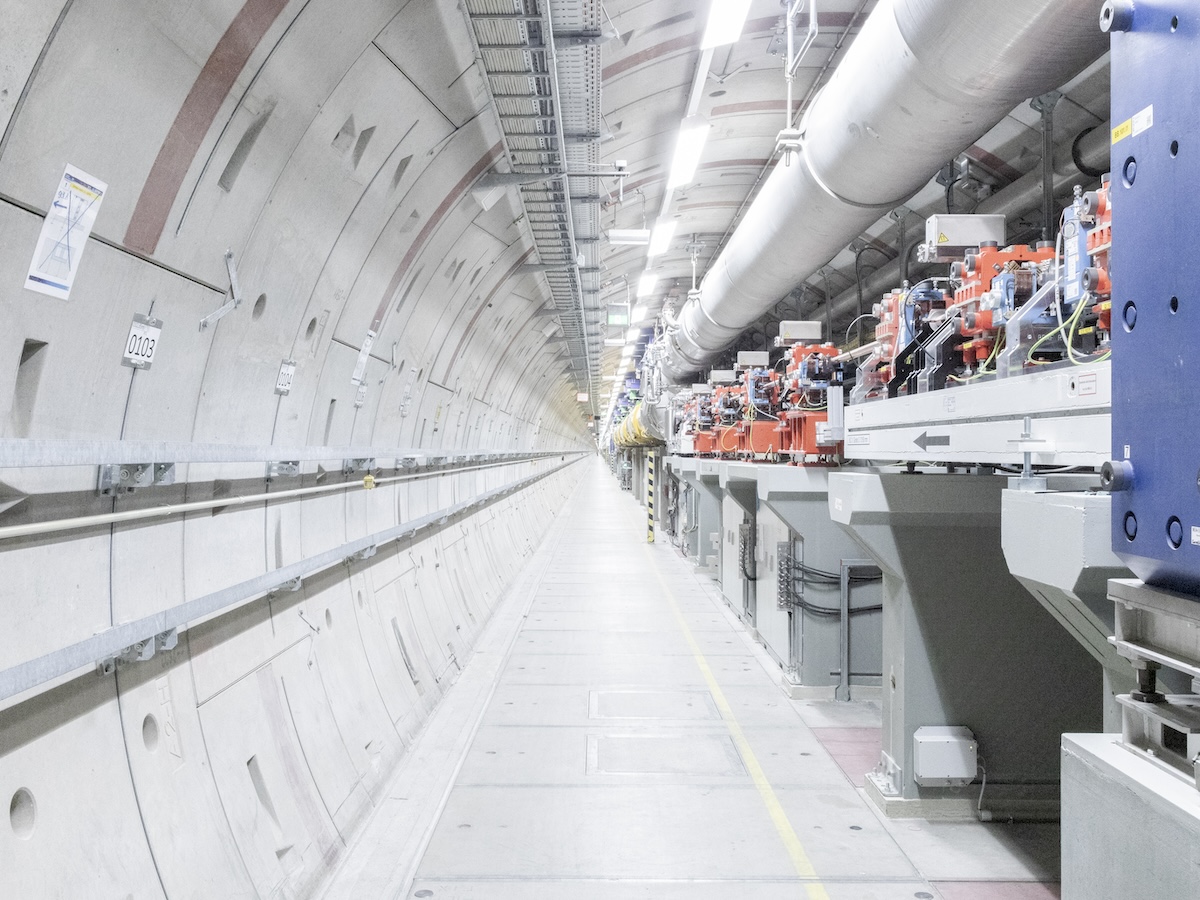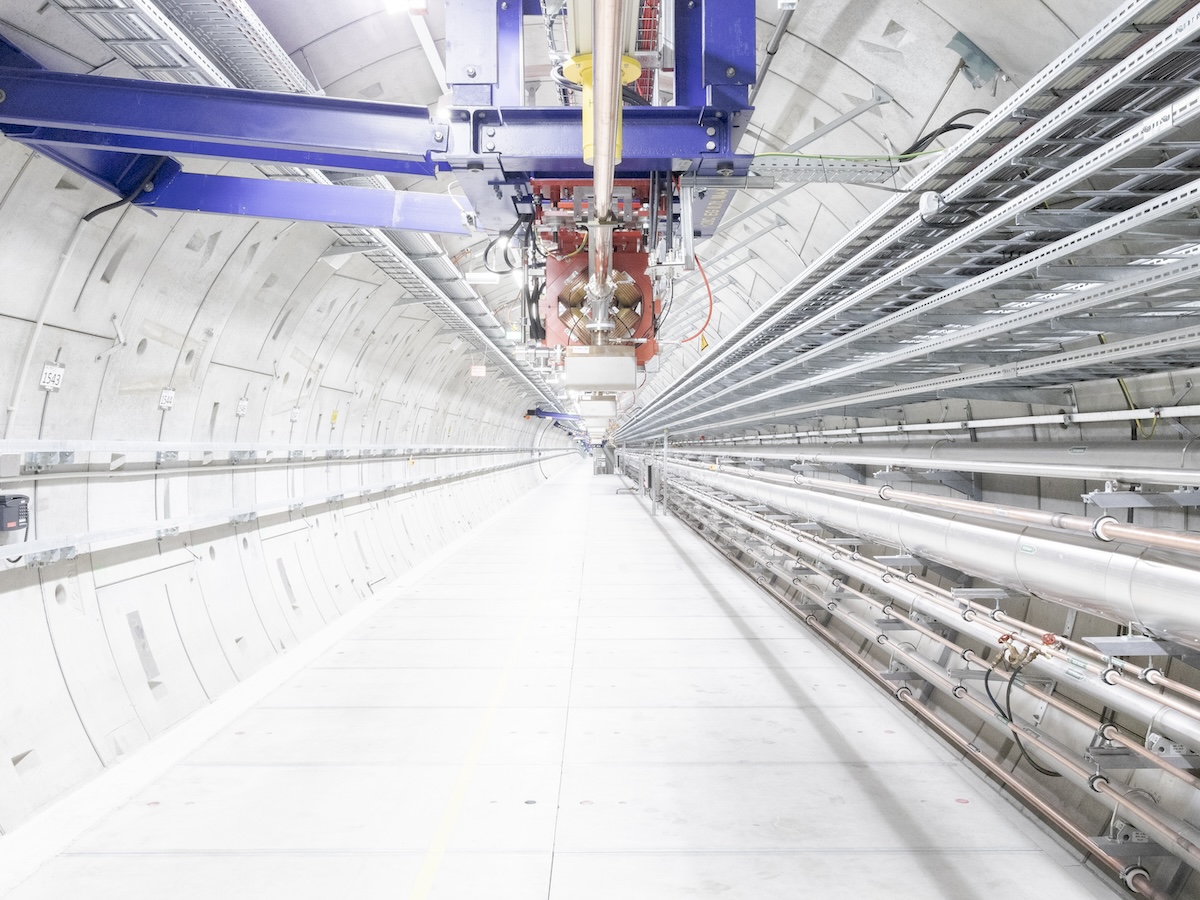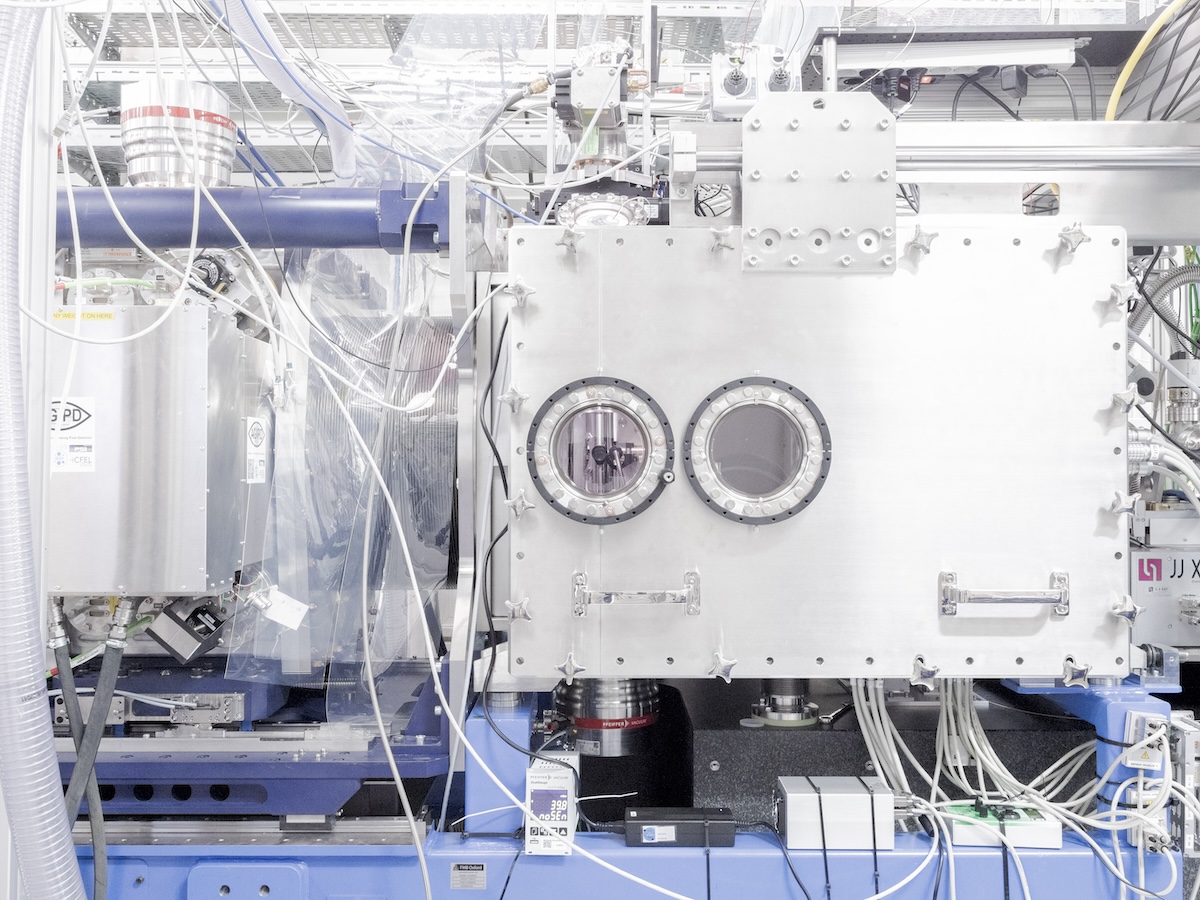XFEL
© SchirraGiraldi (Manuela Schirra and Fabrizio Giraldi)The European XFEL generates extremely intense X-ray flashes, whose brilliance is unique in the world and this characteristic allows it to obtain clearer images than other linear accelerators.
The EuXFEL is the longest linear accelerator in the world (3.4 km) and different technical specifications are of relevance compared to the light sources of Japan, South Korea, Switzerland and the USA.
The flashes are produced in underground tunnels and allow scientists to map atomic details of viruses, film chemical reactions, and study processes in the interior of planets. The operating principles of these types of facilities are very similar. Electrons are first accelerated to high energies and then made to generate high-intensity X-ray laser light using undulators. The EuXFEL was the world's first facility to operate at -271°C using superconducting accelerator technology where the superconductivity allows the creation of an electron beam of especially high quality composed of many-electron bunches aligned one behind the other. This enables the facility to generate many light flashes per second (27,000) that stand out for the peak brilliance which is double that of others in the world. There are experiments only possible at the EuXFEL and the higher number of electron bunches allows more experiment stations (up to 6) to be operated simultaneously.


The European X-Ray Free-Electron Laser is fully operated since 2019 and is periodically updated in its technology. It was created thanks to the collaboration of 12 countries – Denmark, France, Germany, Hungary, Italy, Poland, Russia, Slovakia, Spain, Sweden, Switzerland and the United Kingdom. This facility makes it possible to observe the three-dimensional structures of any type of molecule with a surprising speed and record them with a low-energy X-ray camera among the fastest in the world, capable of capturing not only individual cells but also all the chemical reactions that take place inside them.
The EuXFEL allows us to photograph atoms, proteins and viruses at very high speed and it is the structure that has unequivocally revolutionized the way to study matter at the atomic and molecular level.
click to view the complete set of images in the archive






